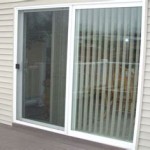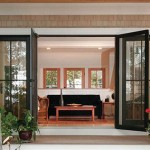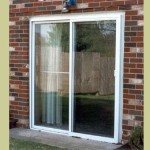Top-Rated Outdoor Patio Heaters: A Guide to Comfortable Outdoor Living
As the days grow shorter and temperatures begin to dip, the desire to extend outdoor enjoyment on patios, decks, and in gardens doesn't necessarily have to fade. Outdoor patio heaters offer a practical solution for maintaining a comfortable environment, allowing individuals and groups to savor open-air spaces well into the cooler months. These heaters come in a variety of forms, each with its own set of advantages and disadvantages. Evaluating individual needs and preferences is crucial in selecting the optimal heating solution.
This article provides an overview of some of the top-rated outdoor patio heaters, examining their features, benefits, and considerations for purchase. Factors such as heating capacity, fuel source, portability, safety features, and overall cost-effectiveness will be considered to provide a comprehensive understanding of the available options.
Types of Outdoor Patio Heaters
Outdoor patio heaters can be broadly categorized based on their fuel source and design. The most common types include propane heaters, natural gas heaters, electric heaters, and wood-burning heaters. Each type offers a distinct heating experience and caters to different needs and preferences.
Propane Heaters: These heaters are fueled by readily available propane tanks and are known for their portability and high heat output. They are typically freestanding units with a large reflector hood that directs heat downwards and outwards. Propane heaters are a popular choice for both residential and commercial settings due to their ease of use and ability to quickly warm large areas. However, they require propane tank refills, which can add to the ongoing operational costs. Safety precautions, such as proper ventilation, are crucial when using propane heaters.
Natural Gas Heaters: Natural gas heaters are connected to a natural gas line, providing a continuous and reliable fuel source. Unlike propane heaters, they eliminate the need for tank refills. Natural gas heaters are often more expensive to install, requiring professional plumbing and gas line connections. They are a suitable option for homeowners who have easy access to a natural gas line and prefer a permanent heating solution. Operating costs are generally lower than propane heaters due to the lower cost of natural gas.
Electric Heaters: Electric patio heaters utilize electricity as their fuel source and are generally considered more environmentally friendly than propane or natural gas heaters. They are typically available in two primary designs: infrared heaters and ceramic heaters. Infrared heaters emit radiant heat, directly warming objects and people within their range. Ceramic heaters use a ceramic heating element to warm the air, providing a more ambient heating experience. Electric heaters are relatively easy to install, requiring only a standard electrical outlet. They are often more compact and lightweight than gas heaters, making them a suitable option for smaller patios or balconies. Operating costs can vary depending on electricity rates.
Wood-Burning Heaters: These heaters, such as fire pits and chimineas, offer a rustic and visually appealing heating option. They use wood as their fuel source and provide a warm, ambient glow. Wood-burning heaters require a consistent supply of firewood and regular maintenance, including ash removal. They are best suited for open-air spaces where proper ventilation is available. Local regulations regarding open fires should be consulted before using wood-burning heaters.
Choosing the right type of heater depends on factors such as budget, desired heat output, availability of fuel sources, and aesthetic preferences.
Key Features to Consider When Choosing a Patio Heater
When selecting an outdoor patio heater, several key features should be considered to ensure it meets specific needs and provides optimal performance. These features include heating capacity, heat control, safety features, portability, and weather resistance.
Heating Capacity: Heating capacity refers to the amount of heat the heater can generate, typically measured in British Thermal Units (BTUs) for gas heaters and wattage for electric heaters. The appropriate heating capacity depends on the size of the area to be heated and the average ambient temperature. Heaters with higher BTU or wattage ratings are capable of warming larger areas more effectively. Consider a heater's advertised heating radius, which can give you a better indication of how far the warmth will reach.
Heat Control: The ability to adjust the heat output is an important feature, allowing users to customize the warmth level to suit their comfort. Some heaters offer multiple heat settings, while others have a variable control knob for precise temperature adjustment. This feature is particularly useful during fluctuating weather conditions, providing flexibility and energy efficiency.
Safety Features: Safety is paramount when using any type of heater. Look for heaters with safety features such as tip-over protection, which automatically shuts off the heater if it is accidentally knocked over. Overheat protection is another valuable safety feature that prevents the heater from overheating and potentially causing a fire. For gas heaters, a flame failure device that automatically shuts off the gas supply if the flame is extinguished is essential. Ensure the heater is certified by a recognized safety organization, such as UL or CSA.
Portability: Portability is an important consideration for those who want to move the heater around the patio or deck. Heaters with wheels or lightweight designs are easier to move. Smaller electric heaters are generally more portable than larger propane or natural gas heaters. Consider the weight and size of the heater when assessing its portability.
Weather Resistance: Outdoor patio heaters are exposed to the elements, so it is important to choose a heater that is durable and weather-resistant. Look for heaters with powder-coated or stainless steel finishes that can withstand rust and corrosion. Some heaters are specifically designed for outdoor use and are rated for water resistance. Proper storage during off-season months will also extend the life of the heater.
Carefully evaluating these features will help in selecting a patio heater that is safe, effective, and tailored to specific needs.
Top-Rated Patio Heater Models
The market offers a wide variety of outdoor patio heaters, each boasting different features and price points. While definitive "top" ratings are subjective and fluctuate based on consumer reviews and evolving technology, several models consistently receive high praise for their performance, durability, and value.
Amazon Basics 46,000 BTU Outdoor Propane Patio Heater: This propane heater is a popular choice due to its affordability and reliable performance. It features a 46,000 BTU heat output, providing ample warmth for a large area. Its simple, classic design makes it adaptable to different patio styles. It includes a tip-over shut-off valve for added safety and is easy to assemble. This unit often receives positive reviews for its value and effectiveness.
Fire Sense Telescoping Patio Heater: This propane heater offers a height-adjustable design, allowing users to customize the heat direction. It has a 46,000 BTU heat output and a durable stainless steel finish. The telescoping feature makes it easier to store and transport. Fire Sense heaters are generally known for their quality construction and user-friendly design.
Heat Storm HS-1500-PHR Infrared Patio Heater: This electric infrared heater is a compact and efficient option for smaller patios or balconies. It has a 1500-watt power output and provides instant radiant heat. It can be mounted on a wall or ceiling, saving valuable floor space. Heat Storm heaters are known for their energy efficiency and easy installation.
Infratech W Series Single Element Electric Infrared Heater: This electric infrared heater is a premium option known for its high performance and sleek design. It delivers consistent and intense heat, making it suitable for both residential and commercial settings. Infratech heaters are often favored for their durability, energy efficiency, and customizable options. Although it comes with a higher price point, it's generally considered to be well worth the investment for those seeking high-quality performance.
Endless Summer, GAD15257SB, GLOW Fire Pit Table: This fire pit table combines the functionality of a patio heater with the ambiance of a fire pit. It uses propane gas and features an adjustable flame height. It offers a built-in table top for convenient use and is often chosen for aesthetics and the dual purpose it fulfills.
When considering specific models, it is recommended to read reviews from multiple sources and compare features to determine which heater best aligns with individual needs and budget.
Remember to always prioritize safety when operating any type of outdoor heater. Adhere to the manufacturer’s guidelines and ensure adequate ventilation. Regular maintenance can prolong the life of the heater and maintain its optimal performance.
Choosing the right outdoor patio heater can significantly enhance the enjoyment of outdoor spaces during cooler months. By considering the various types of heaters, key features, and specific models, individuals can make an informed decision and create a comfortable and inviting outdoor environment.

The 2 Best Outdoor Patio Heaters Of 2024 Reviews By Wirecutter

The 2 Best Outdoor Patio Heaters Of 2024 Reviews By Wirecutter

The 2 Best Outdoor Patio Heaters Of 2024 Reviews By Wirecutter

10 Best Patio Heaters And Outdoor In 2024 Hgtv

10 Best Patio Heaters And Outdoor In 2024 Hgtv

Best Patio Heaters Of 2024 Cnet

10 Best Patio Heaters And Outdoor In 2024 Hgtv

Best Patio Heaters Of 2024 Cnet

10 Best Patio Heaters And Outdoor In 2024 Hgtv

The 2 Best Outdoor Patio Heaters Of 2024 Reviews By Wirecutter
See Also








